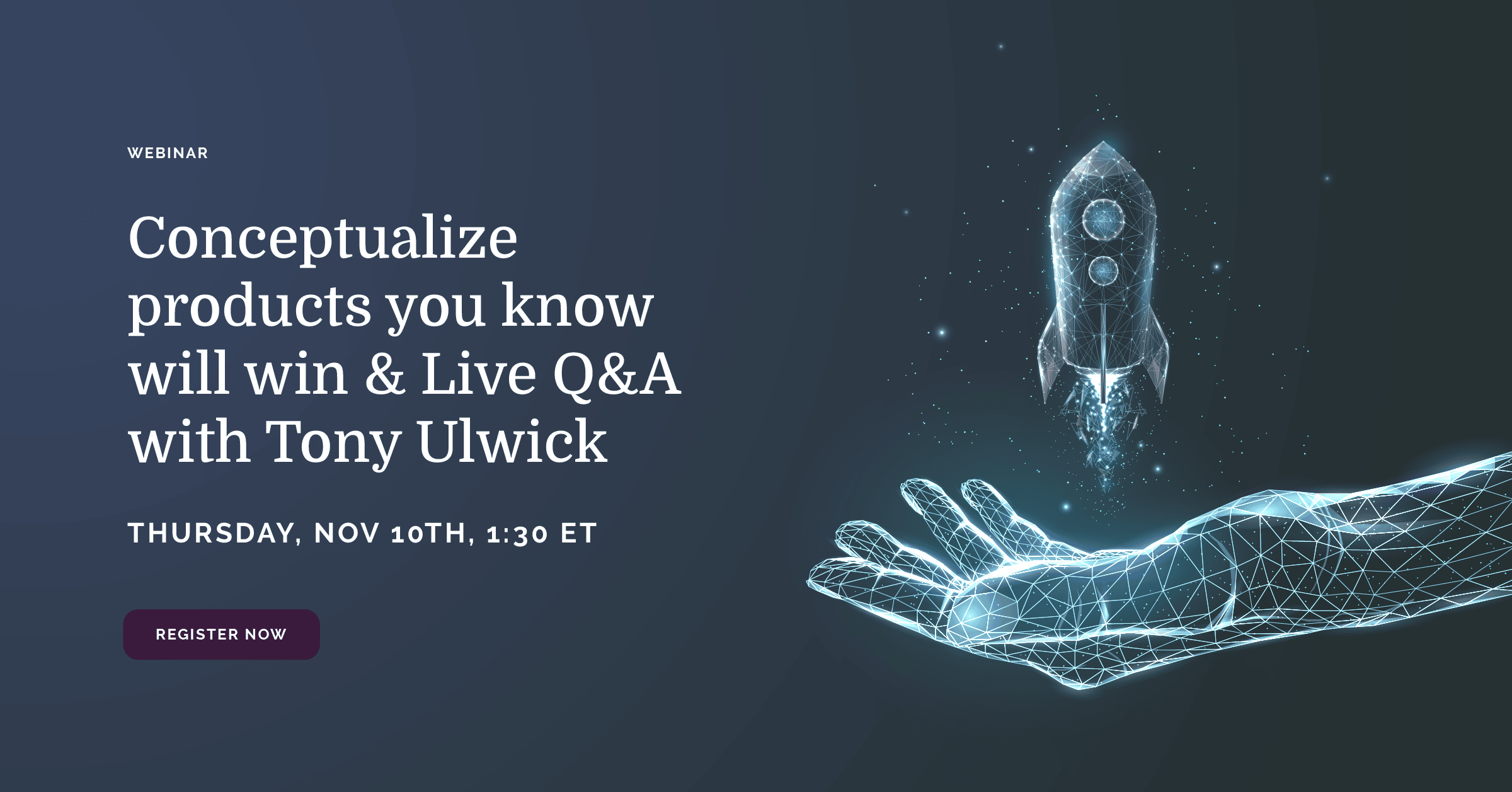As Theodore Levitt said, “People do not want a quarter-inch drill, they want a quarter inch hole.” It's true. People buy products and services to get jobs done; and while products come and go, their underlying jobs-to-be-done do not go away. This notion is at the heart of Jobs-to-be-Done (JTBD) Theory.
While most companies innovate by trying to improve their existing products (creating a better quarter-inch drill), the innovation process is dramatically improved by instead trying to find better ways to create a quarter-inch hole (to get the job done). The implication of this thinking is profound: stop studying the product and instead study the job that people are trying to get done. By making the job, rather than the product or the customer, the unit of analysis, we’ve made it possible for companies to achieve predictable growth.
Here’s how our Jobs-to-be-Done methodology works in practice. In a nutshell, by focusing on the job-to-be-done, it becomes possible, for the first time, to know all the customer’s needs and determine which are unmet. It turns out that when customers are executing a job, they have a set of metrics in mind that define the successful execution of that job. These metrics (or desired outcomes) can be captured as actionable customer need statements that replace the customer inputs companies ordinarily capture to create new products. We have discovered that customers typically use between 50 and 150 distinct outcome statements to describe the successful execution of any job. These metrics are uniquely structured statements that describe how customers measure value. They are the perfect input into a process that is aimed at creating valued products and services.
The ramifications of Jobs-to-be-Done (JTBD) Theory do not stop here.

Jobs-to-be-Done Theory tells us much more about customers, strategy, products and how managers should think about business, growth and innovation. The theory tells companies to heed the following bits of advice:
Define your markets around the job-to-be-done. While most companies tend to define a market around a product, technology or a solution, when applying Jobs-to-be-Done Theory, a market is defined as a job executor and the job that executor is trying to get done. For example, 'parents' (the job executor) trying to 'pass life lessons to their children' (the job-to-be-done) is a market. Defining the market this way opens the door to a different type of market analysis, as the goal becomes analyzing the job to discover where parents struggle to get their job done - rather than just analyzing the products they already use for that purpose.
Help customers get the entire job done. People do not want to have to cobble together different products and services to achieve their goals. They want one product that helps them get the entire job done. The key to success is understanding, from the customer’s perspective, just what the entire job is - and making that job the focal point of value creation. Keurig and Nespresso products, for example, get more of the “prepare a hot beverage” job done than competing solutions such as a coffee pot or a tea bag.
Help customers get more jobs done. Products evolve over time to help people get more jobs done. Jobs-to-be-done Theory tells us that the more jobs a product can help a customer get done, the more valuable that product is as a product platform in that space. The swiss army knife, for example, helps customers get dozens of jobs done, and the smartphone helps customers get thousands of jobs done.
Design a business around a job-to-be-done. Rather than designing a business around a product that is certain to become obsolete, companies should design a business around the job-to-be-done. This way the company will always be focused on creating the solutions that will get the job done best. This will result in longevity, as the company will be more likely to disrupt itself.
Target those who will pay the most to get the job done best. When a market is highly underserved, the fastest way to profits is to first target the people who will pay the most to get the job done the best. We use outcome-based market segmentation methods to discover if such a segment exists in a given market. Nest, for example, targeted underserved customers who were willing to pay 5 times more for a solution that would get the job of “achieve personal comfort” done significantly better. This strategy is in stark contrast to a low-end disruption strategy where companies target overserved customers who want to pay less to get the job done worse.
Focus R&D and M&A efforts on getting a customer job done better. Companies invest lots of cash in R&D and M&A efforts, but those investments rarely pay off. Why? Because often times the investments are not made to help customers get a job done better. JTBD Theory tells us that this is the main reason such investments should be made.
Let JTBD Theory guide your future. What products will win in the future? The products that help customers get the job done better. Knowing where customers struggle today to execute the job-to-be-done indicates what a product has to do in the future to win in the marketplace. JTBD Theory predicts what products will win in the future.
These insights have resulted in a revolutionary innovation process, Outcome-Driven Innovation. Using this process, companies are far more likely to launch products and services that get their customers' jobs done significantly better.
Copyright ©2024 Strategyn LLC. All Rights Reserved. | XML Sitemap | HTML Sitemap